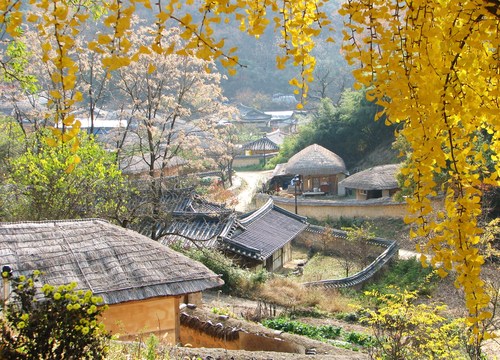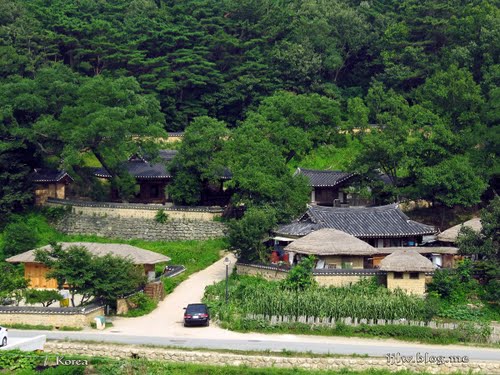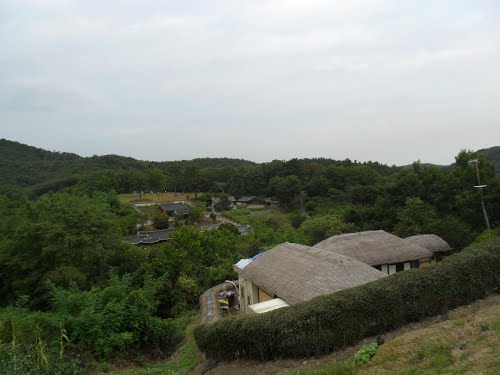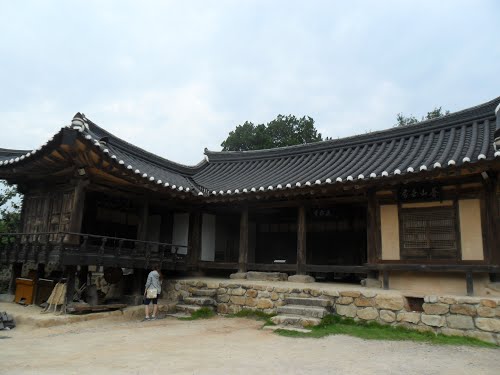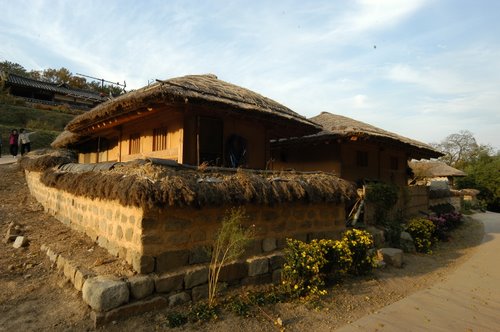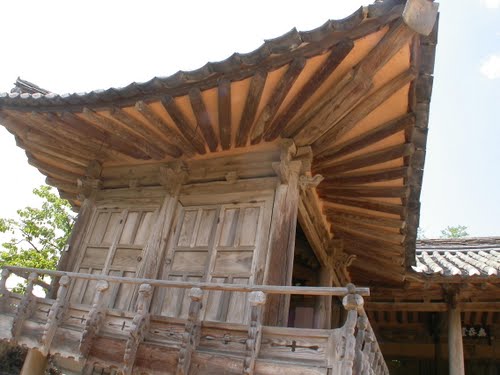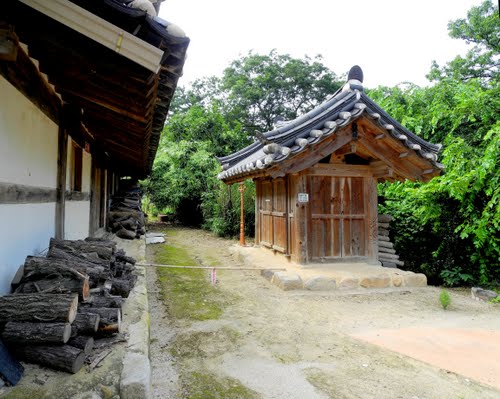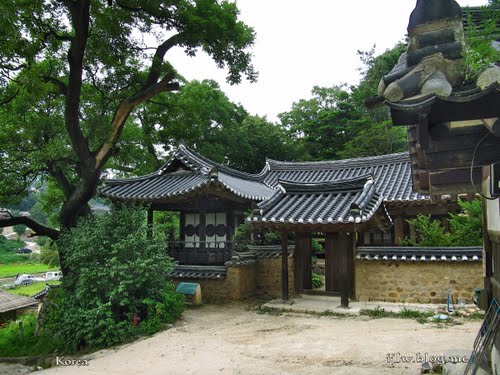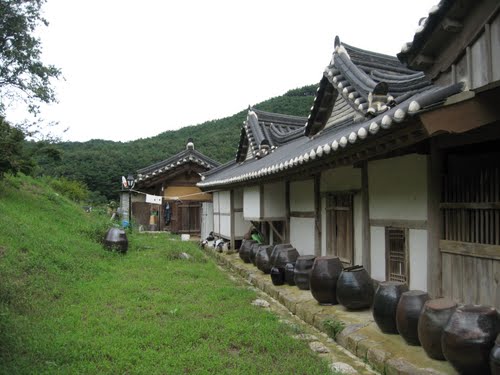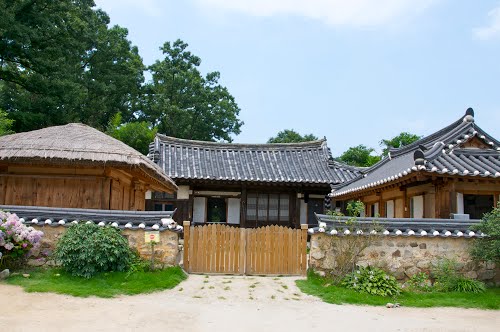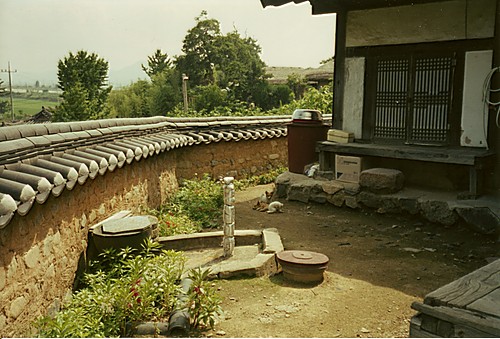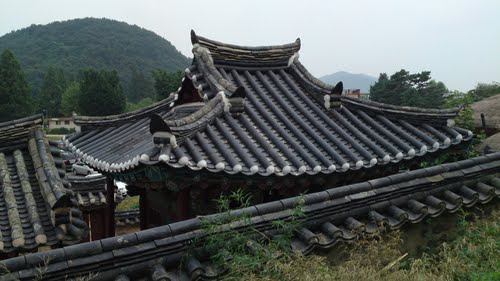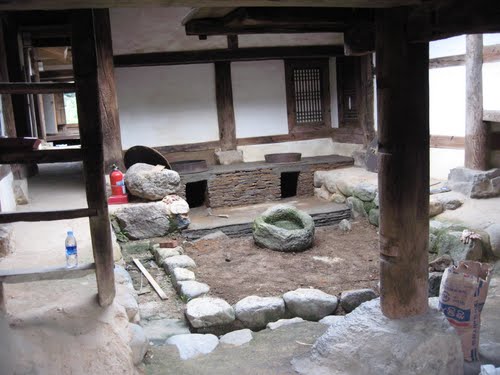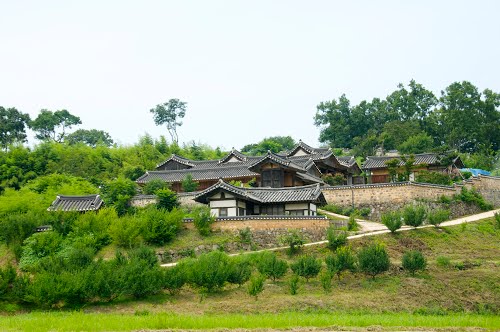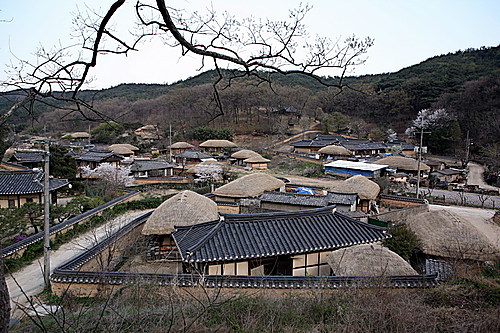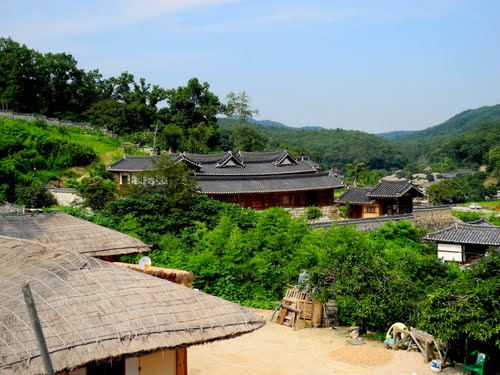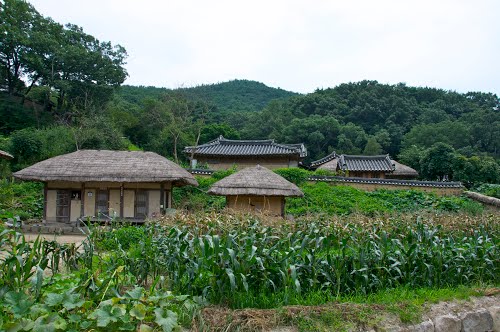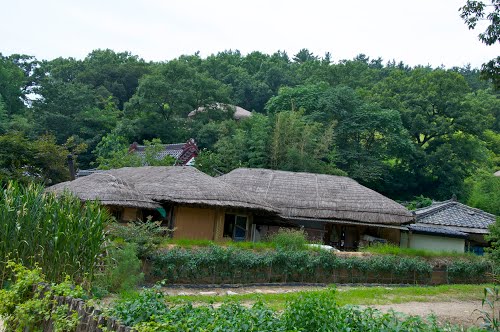Yangdong Folk Village is a traditional village from the Joseon Dynasty. The village is located in Gangdong-myeon, sixteen kilometers northeast of Gyeongju, Gyeongsangbuk-do, South Korea, along the Hyeongsan River. Mt. Seolchang stands to the north of the village. The village is designated as Important Folklore Materials by the South Korean government.
The size, degree of preservation, numerous cultural assets, traditionalism, beautiful natural setting all contribute to the importance of Yangdong Village. It is also a fine example of the yangban lifestyle and Neo-Confucian traditions.
The village is listed by the South Korean government with UNESCO as a World Heritage site with Hahoe Folk Village in 2010.
Overview
The village was founded by Son So (1433-1484). The household of the Wolseong Son clan was placed on an auspicious site according to Korean theories of pungsu. Son So and his wife, the daughter of Yu Bok Ha had a daughter who married Yi Beon of the Yeogang Yi family. The marriage produced one of the eighteen sages of Korea, Yi Unjeok. The village of Yangdon has continued since its auspicious beginning in the 15th century.
Although some of the village is unoccupied today, the overall the village has over 160 tile-roofed and thatched-roof homes built throughout the dense forest. Fifty-four historic homes over 200 years old have also been preserved. The village preserves folk customs as well as traditional buildings of traditional Joseon Dynasty architecture. Seobaekodang is the primary home of the Wolseong Son Family. Mucheomdang, is the primary house of the Yeogang Yi family. Hyangdan is National Treasure. Ihayangjeon and Simsujeong pavilions, and the Ganghakdang village school are also notable structures of the village as well as Gwangajeong and Sonsoyeongjeong. Tonggamsokpyeon, a book printed on movable metal type and National Treasure is also located in the village. A picture of the village as you enter it.

